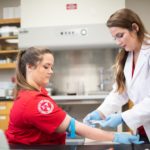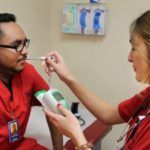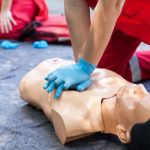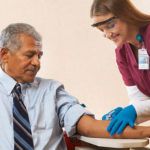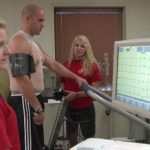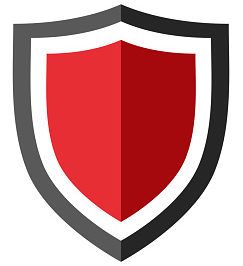How To Become CPR Certified
Obtaining certification in cardiopulmonary resuscitation (CPR) and First Aid is very important for both career and personal development. It guarantees that your skills were trained under the supervision of a well-respected national organization. Employers often take such certifications under consideration when looking to hire personnel in healthcare, child care, and occupational therapies. Formal training protects against lawsuits from patients and victims who have their constitutional rights reserved to sue rescuers or practitioners.
Many agencies are offering First Aid and CPR training. The two most recognized institutions are the American Red Cross (ARC) and the American Heart Association (AHA). Accreditation can also be obtained through community colleges, vocational schools, clinics, and fire departments.
Entry-Level CPR & First Aid Training
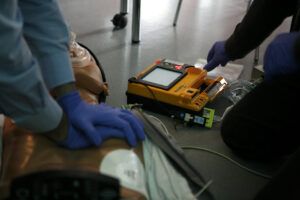
There’s no minimum education level required for most organizations.
However, you’ll have to be at least ten years old to participate.
Training regards procedures and strategies to adopt for everyday emergencies.
CPR/AED
- Rescue plans and methods.
- Artificial ventilation and chest compression.
- Adult, senior, infant, and child care CPR.
- How to assemble a basic First Aid kit bag with bandages, antibiotic ointment and spray, aspirin, hand sanitizer, and gauze.
- Use of Automated External Defibrillator (AED).
- Heimlich maneuver choking response (abdominal thrusts).
BLS
- First Aid strategies and techniques.
- Additional chest compression and rescue breathing practice.
- Basic life support for traumas, drowning, shock, and drug overdose.
- AED practice.
- Handling stroke victims.
- Bloodborne pathogen education.
First-Aid
- Internal and external bleeding.
- Burns of different degrees.
- Unconscious or unresponsive people.
- Fainting and heatstroke victims.
- Bites and stings by animals and insects
- Allergic reactions.
- Choking and asphyxiation.
- How to create a First Aid bag.
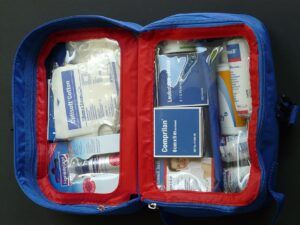
How To Become CPR Certified
The first step is to find an accredited CPR/AED certification course. Whether it’s an online CPR or offline training program, make sure that the CPR training courses are approved by the Joint Commission on Accreditation of Healthcare Organizations (JCAHO) and compliant with the International Liaison Committee on Resuscitation (ILCOR) standards and guidelines. For instance, industry-leading organizations such as the American Heart Association (AHA) or the American Red Cross (ARC) are approved.
You should also check if the organization releases CPR cards or diplomas to prove you’ve finished the class. And you should verify if the instructor is legally licensed to teach CPR. This is very important as learning CPR form an unqualified teacher may put you at legal risk in the future. For instance, presume you’re giving CPR or First Aid to a victim who dies or sustains life-long impairments. And he or his family finds out you’ve been trained by an unqualified instructor. They have their rights reserved to sue, and in such case, you’re also liable. Even if you’re not directly charged in the lawsuit, you’re still legally vulnerable.
How to avoid scams
Candidates should be suspicious of agencies promising certifications with no skill check, not associated with national institutions, or don’t send certificates through the mail. Additionally, online CPR training courses ensuring instant electronic certifications through your email address, are usually fraudulent. Be wary of companies trying to aggressively sell you a product or service, request social security numbers, don’t have reliable customer service, or ask for sensitive information such as passwords.
After you’ve found a respectable institution, you’ll have to decide on which type of class you want to pursue. There are three types of courses: in-person, online, or hybrid.
- An in-person CPR certification course has the biggest validity as it’s not only theoretic but offers practical training on people and mannequins. You’ll also have direct access to teachers and resources. The downside is you’ll have to commute and follow a schedule.
- A CPR certification online course lacks hands-on training but offers the greatest flexibility.
- A hybrid course combines the two. It offers readily-available online CPR resources and arranges practical training at specific times. A hybrid training course has good flexibility, but you’ll still have to follow a schedule.
American Heart Association (AHA) certification step-by-step
Sign up to the American Heart Association (AHA) through their website. After CPR training, you’ll be required to sustain the BLS exam, which has 25 questions. You’ll need to score 84% or higher to pass. All the inquiries are related to the educational training material provided by the association. AHA allows candidates to sustain pre-exams and revisit study resources.
Candidates are also required to prove their skills in several practical CPR tests:
- Checking patients for a response.
- Dialing 911 emergency call.
- Clearing airway using the chin-tilt method.
- Checking for breathing.
- Verifying carotid pulse.
- Executing cardiac massage with correct hand positioning.
American Red Cross (ARC) certification step-by-step
For the American Red Cross (ARC) certification, you’ll have to formally enroll in a general CPR class. Many institutions, such as the ARC, offer concomitant Automated External Defibrillator (AED) certification. If possible, try to obtain both as it’s the minimum standard for most industries.
Following basic CPR/AED certification, you should consider furthering your knowledge and proceed to Basic Life Support (BLS) certification. The course is designed for caregivers and healthcare professionals. This will give you a competitive edge in the job market, as well as improving your education. Finally, complete your general set of awards by finishing the First Aid certification.
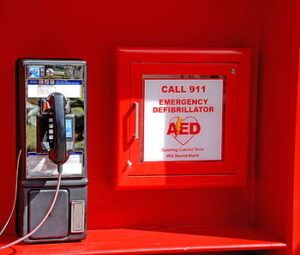
How much does a CPR certification cost? Is it ever free?
Typically, the total cost for a basic CPR certification training course is around $30 to $40. However, free certifications can be obtained in certain situations:
- Employer-sponsored free CPR training courses
Check the HR department of your company and see if there is the possibility of enrolling in a free CPR course. Many companies require mandatory First Aid certification and might subsidize at least a part of the cost.
- Non-profit organizations
Although not year-round, some non-profit organizations might offer free CPR training certifications with the occasion of workshops, territorial emergencies, or events such as the “CPR week” between the 4th and 10th of November.
- Online CPR courses
Some online courses may offer free CPR training certifications. It’s essential, however, to make sure that the course has been approved by authoritative boarding institutions or national certification organizations. Although valid, these online CPR training courses are some of the least recognized due to their lack of practice.
Maintaining Your CPR Certification
Recertification is essential to maintain CPR certification validity. Most national agencies require it, including the American Red Cross (ARC) and the American Heart Association (AHA).
Usually, certifications only last two years. You’ll need to sustain a refresher class to renew your credentials. The expiration date should be indicated on the official card or diploma.
